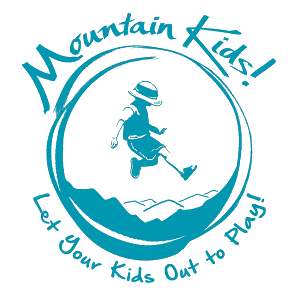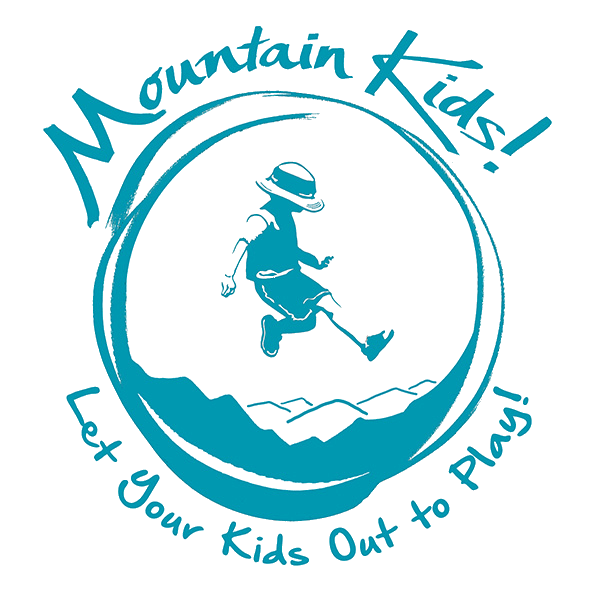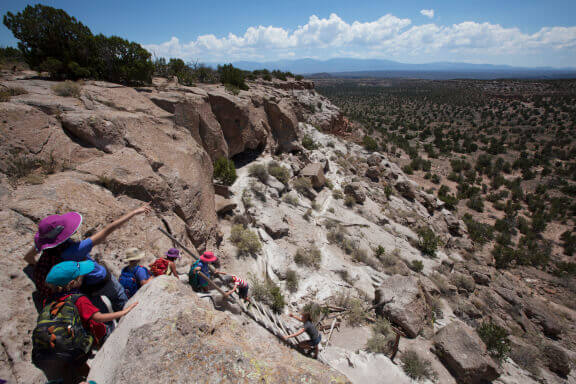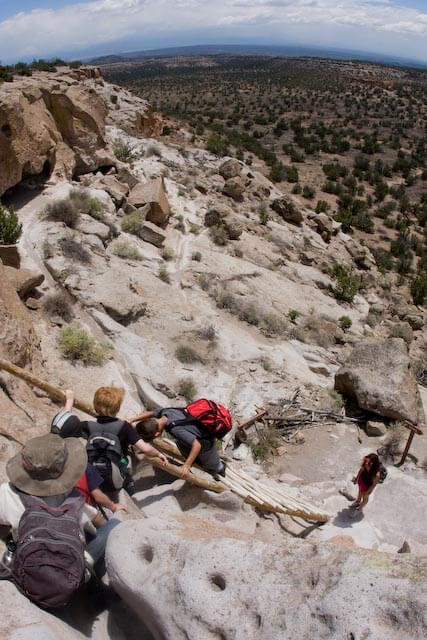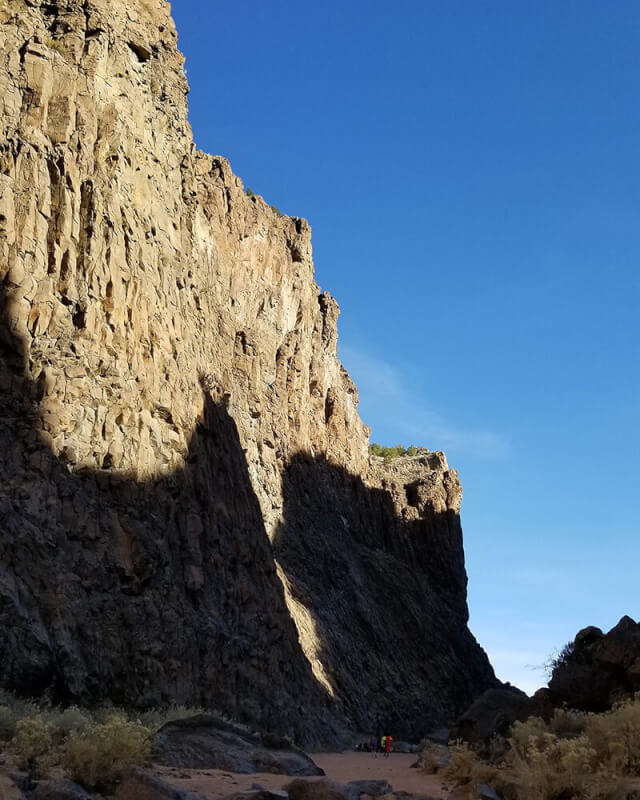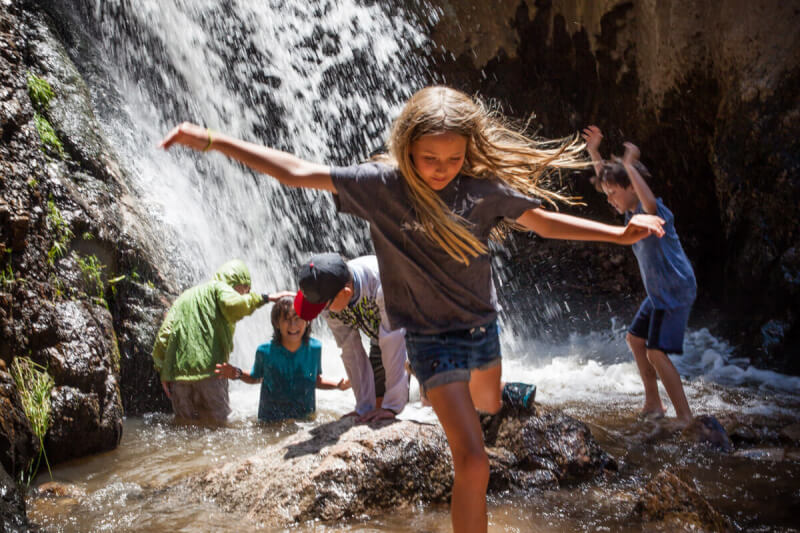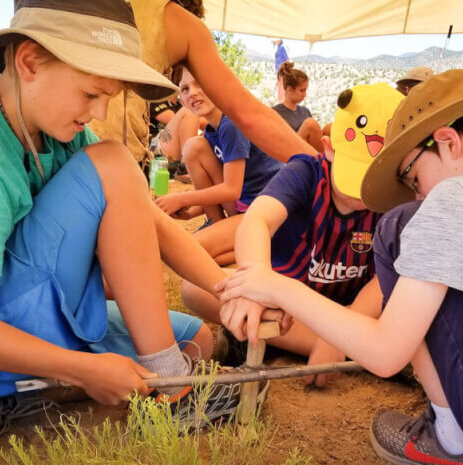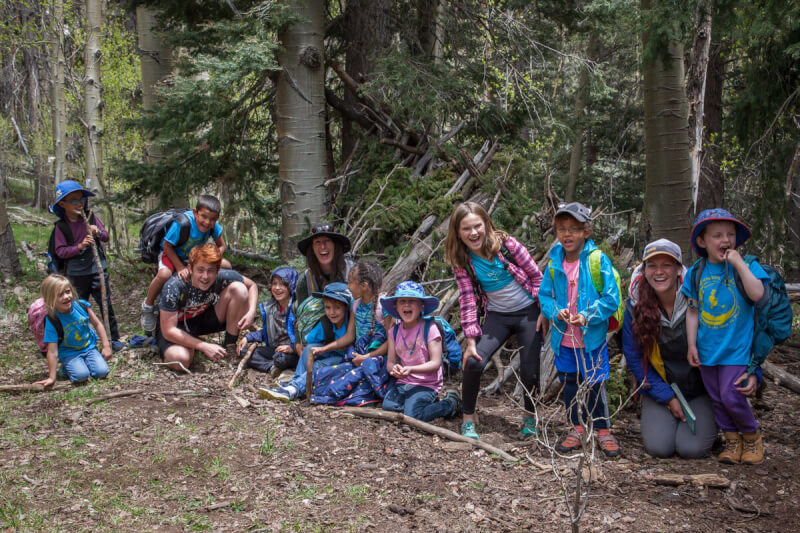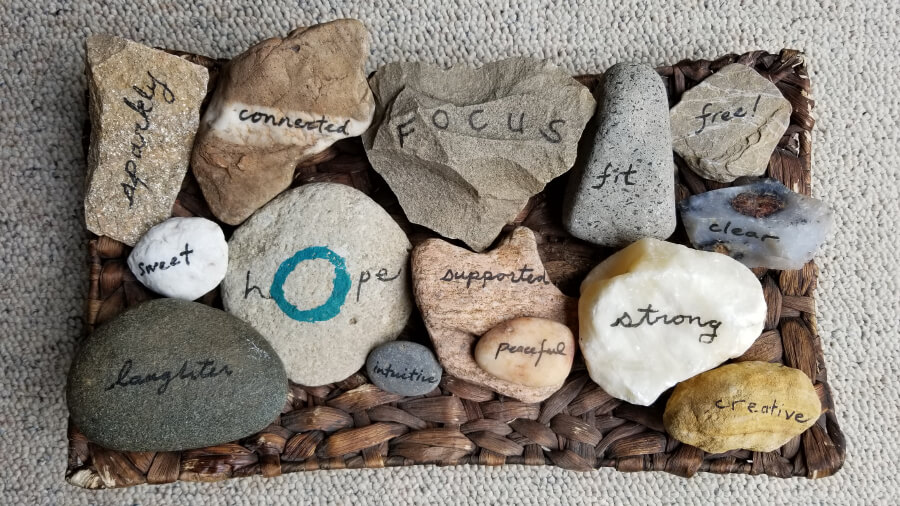Original Article written for Tumbleweeds, a Quarterly Newspaper for Santa Fe families, by Katie Macaulay.
November 2017.
For even the most avid snow-sports enthusiasts, sometimes you just want a break from the snow in the winter. Or perhaps you are not a snow-lover in the first place, and you are waiting out winter in your house. Or maybe the kids are driving you crazy as they bounce between rowdy house play, spending too much time on their beloved screens, or tearing apart your living room to make forts. (Actually, fort building is one of my favorite indoor winter activities for kids, but I digress.)
If any of these scenarios ring true for you, I have a few favorite spots for winter fun to get everyone filled with nature-bliss endorphins and happily tired. These are places that are often too hot to enjoy in summer heat, but are perfect for winter outings when a little extra sun and warmth is key.
The first is Ghost Ranch, which is just over an hour from Santa Fe on highway 84. You can tell your kids that dinosaurs once lived here and that they might even get to see one! The Paleontology Museum is worth a stop (Open Mon-Sat 9-5 and Sunday 1-5) to get a get a glimpse of our State Fossil, the Celeophysis, found right at Ghost Ranch, and see some bones and a large dinorsaur diorama. On the way, be sure to stop at Bodes General Store in Abiquiu to pick up lunch for the trail – burritos and burgers are family favorites!
There are three awesome hikes/adventures to choose from at Ghost Ranch: Chimney Rock, Kitchen Mesa, and Box Canyon. In the winter there will be almost no one else here, so you can get your awe and solitude in one fell swoop. Stop in at the Welcome Centre to pay a fee and get a map of the hikes.
The trail to Chimney Rock is behind the museum, and is a steady climb up to a dramatic view of the towering orphaned rock. A steep section at the beginning of the trail gives way to a more gradual climb, with a few steeper sections on the way up to the mesa top. The view is spectacular, spanning the colorful rocks of Ghost Ranch, the Chama River valley, Abiquiu Lake and Pedernal Peak. While here you can also impress your friends, and possibly your kids, by telling them what the three layers of rock in this area are. (See the end of this article for the cheat sheet.)
One caveat is that there is a significant drop from the viewpoint, with no safety railings, and a plaque for someone who presumably lost his life here. (Current mythology is that he was trying to “climb down.”) My rule of thumb with Mountain Kids! and my own kids is to stay two body lengths away from the edge. You can use your judgment, but a minimum of one body length is recommended. If you don’t trust your kiddos to stay away from the edge, save this for another year, and choose Box Canyon instead. Chimney Rock is a challenging climb for little people, and an exciting challenge for older kids and adults wishing to get big views, a workout, and great rewards.
The Kitchen Mesa Hike is also not for the faint of heart, but so worth it if you are not afraid of heights. (My mother sat down in the middle of the climb up the mesa and refused to budge.)
That said, it is not mandatory to get up on top of the mesa to be in awe. The hike meanders amongst some profoundly massive red boulders with towering mesas on either side. If you are up for the climb to the top of Kitchen Mesa, the views are well worth it. It is exhilarating to explore this giant rock and take big cleansing breaths while on top of the world.
The Box Canyon hike is perfect for people who prefer to look up instead of down. It is relatively flat compared with the others, so great for little legs and feet. In the summer there is a creek flowing here, but in winter it is a dry riverbed. The trail begins on a dirt road and then crosses the riverbed and meanders upriver on rocky terrain. Just when your kids decide they are done, push a little bit farther to the box canyon, because it is so worth it.
You’ll know when you have arrived, as the giant semi-circle of overhanging rock is awe-inspiring. Your arrival will no doubt be accompanied by shouts of “Echo!” and a sudden surge in your child’s energy to scramble and explore the sloping rock. You might want to insist they eat and water themselves first. Also, keep your eyes peeled for a giant raptor nest on the cliff above the trail. I have seen adults and babies in these nests. It is quite awesome to witness their wingspan if you get lucky enough to see them fly.
If you want a shorter drive, Tsankawi is another awesome winter hike, only 45 minutes from Santa Fe via Hwy 84, 502 and 4. Tsankawi is the smaller, lesser known cousin of Bandelier National Monument without handrails and concrete steps. At Tsankawi you can pretend you are explorer discovering this place for the first time, with waist deep grooves in the paths and a myriad of caves to explore. Pick up a map for $1 at the entrance to learn more while you hike.
The loop trail involves a few ladders, so be prepared to navigate these. The first one is short (and can actually be avoided), the second can be missed entirely by taking a slot trail, and the third, at the far end of the mesa, is the longest, and unavoidable. I like to do the trail “backwards” with younger kids so they can climb up the ladder instead of down which is easier for them. To do it this way, stay right and walk along the edge when the arrow points up to the left. You will also avoid the second ladder this way. There is a drop-off on part of the trail, but the path is wide enough to avoid heart-palpitations, for the most part.
Once you reach the caves, be sure to stop and sit in one together. (Be careful to tread lightly, as it is easy to kick up dust inside, which makes sitting inside no fun.) In the cave, have a snack, tell a story, break out your long lost flute or recorder, or just imagine what life would have been like for the kids who lived here. Would your kids like to live here? Why? Why not? These are fun ideas to ponder with your kids and can provoke conversations for days and weeks to come. Next time you take away their screen time, they can pretend they live in a cave and need to find their own fun!
My last suggestion is the closest to Santa Fe – Diablo Canyon Recreation Area via 599, Camino La Tierra and Old Buckman Road. It is not far as the crow flies, but the washboard road makes driving slow and tedious (45 minutes or so). The wonderland of rocks, cliffs and sand make it worth it though, as you enter another world.
As you being your walk, you might see some little dots on the sheer rock cliff face above you. These dots are people who climb this behemoth of a rock: remarkable and inspiring, and for those of us who prefer to stay close to the ground, downright scary. Luckily, you will be on solid ground, and it makes climbing the big black boulders below seem very safe by comparison.
With little ones you will prefer to stay in the sandy, beach-like wash that navigates between the sheer face on your right and the pile of boulders on your left. The canyon narrows and then opens up, widening and eventually reaching the Rio Grande. You can walk down as far as you desire, which is often not too far with kids who love to create their own games and play, jumping off the big rocks.
If your kids are a little older and you have confidence scrambling over big rocks with them, you can walk up the black rocks on your left and go as far as you feel comfortable. I have been to the tippy-top of the mesa with some confident climbers in the 9-11 year-old range. If this is your cup of tea, it’s a blast – inspiring, confidence-boosting and memorable. If you are a nervous mom or dad, you may want to keep the kids on the down low.
I have seen rattlesnakes here and at Ghost Ranch, but that should not be a concern during the winter months.
So there you have it. You have no excuse now for not getting outside with your kids this winter. Even if you hate the cold, all of these places can be quite warm on sunny winter afternoon, and will inspire even the most-curmudgeonly hiker to get some nature-inspired endorphins pumping.
1480
Ghost Ranch Cheat Sheet
Red – Chinle layer, from the Triassic period about 220 MYA, full of dinosaur bones, including Celeophysis, our state fossil.
Yellow – Entrada layer – sandstone – these are petrified dunes from a vast desert, 161-165 MYA
White – Todilto layer – from a salty inland sea about 50 mya.
Tsankawi Cheat Sheet
The rock here was created when the Valles Caldera blew it’s top, and ash and lava flowed down to form what is now called volcanic tuff. It is a soft rock that the pueblo people dug into to make the caveates. Caveates are human made caves that were a part of the pueblo peoples settlement. (They built additional rooms outside of the caves. Look for holes in the rock that held beams for a roof.) Grab a map of Tsankawi for $1 at the trailhead and stop at the numbered markers to learn more!
